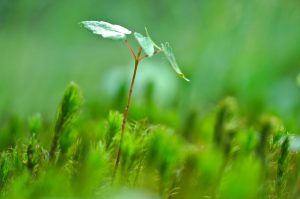As it’s the Christmas Season, we wanted to dedicate a post to the festive, evergreen Christmas Tree! Christmas trees are oftentimes either pine or fir. It has become a tradition for many families to go out and chop down their own Christmas Trees. Their lovely pine smell truly marks the start of the Christmas holidays.
1. Sustainable Christmas Trees
If you are worried that your Christmas Tree is contributing to deforestation, there are other options available. There are extremely realistic faux Christmas Trees on the market. This could be a great option if you don’t like the hassle of cleaning up pine leaves.
There are also great companies that have begun an almost ‘catch and release’ programme for Christmas Trees. You pick out which tree will best suit your home for the holidays and when you’re done with it, the company takes it back. The tree will then be planted when it’s ready and it will be left to grow strong and tall each year. This type of initiative will help reduce the number of trees that are chopped down and left to decompose each year.
2. Re-Planting Your Own Christmas Tree
If you don’t fancy using one of the aforementioned companies or going the artificial route, you may also consider re-planting your own tree! While it can be quite difficult to make sure the tree stays happy and healthy year after year doing this, it’s not impossible! There are some great resources available online to help guide you through this process. If we can give you a few tips, here’s a few key takeaways:
- Make sure the tree is properly acclimated before planting
- Dig a large enough hole so the roots are not cramped
- Layer good quality mulch around the tree
- Water deeply
If you have any questions about Christmas Trees or how to replant them, why not give us a call? We’d love to have a chat.

 If you live in a climate where trees change colour and shed their leaves, it’s a great idea to rake these up and make sure they’re off the ground once they’ve fallen. This will make your life a lot easier in the Spring when you’re preparing your garden for summer. Additionally, leaving leaves on the ground creates a perfect, damp environment for fungi and unwanted bacteria to grow. This could lead to the soil being depleted of all of its nutrients which means the plants you want in your garden will have a harder time growing.
If you live in a climate where trees change colour and shed their leaves, it’s a great idea to rake these up and make sure they’re off the ground once they’ve fallen. This will make your life a lot easier in the Spring when you’re preparing your garden for summer. Additionally, leaving leaves on the ground creates a perfect, damp environment for fungi and unwanted bacteria to grow. This could lead to the soil being depleted of all of its nutrients which means the plants you want in your garden will have a harder time growing.

 2. Cherry Trees
2. Cherry Trees



